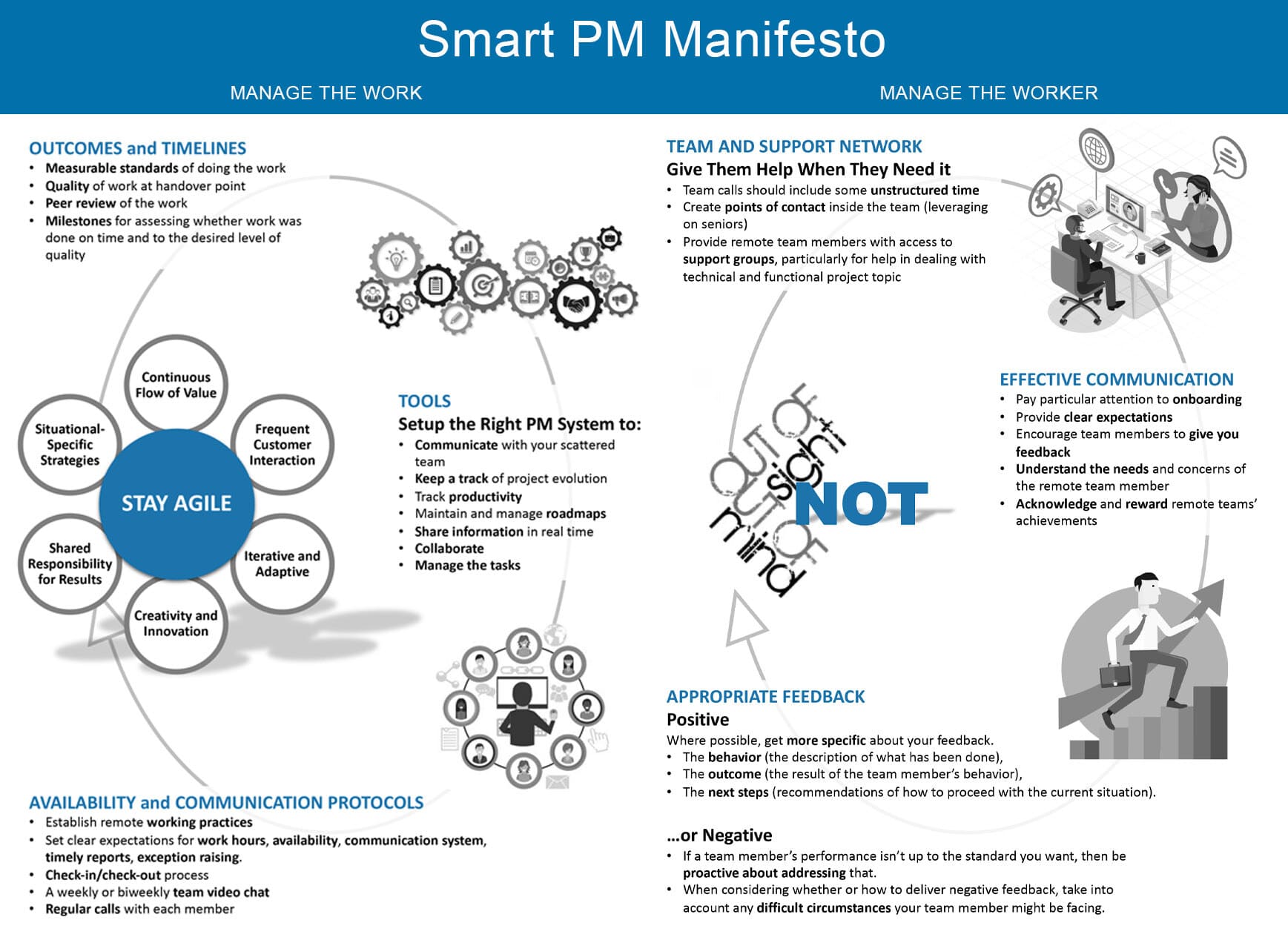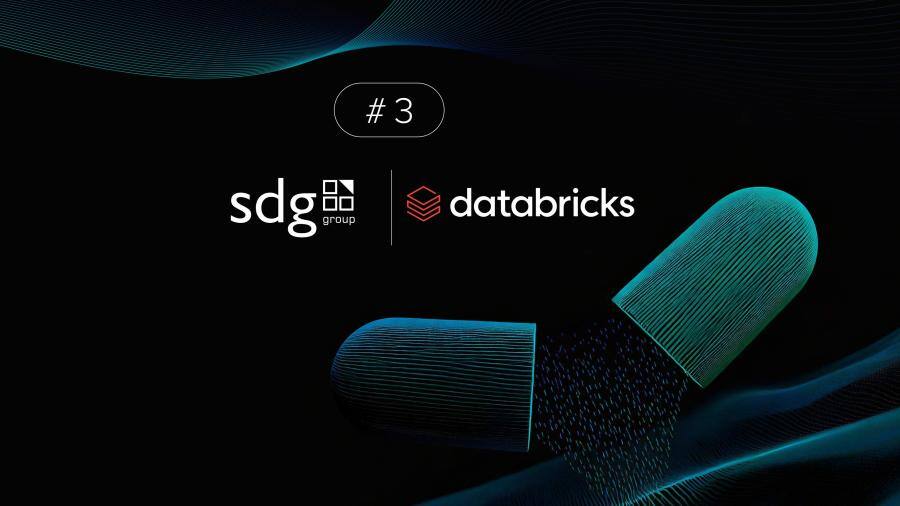Technological tools are fundamental, but even more important are some organizational and relational aspects. Best practices and advices from SDG Group Project Management Office
About half of the world's population is in quarantine, almost 4 billion people in the world. Many of these, whose activities are not considered by their countries as strategic or fundamental, cannot go to work. Someone is benefiting from supportive measures, such as the subsidies foreseen by the different economical systems, others are experiencing a further tragedy and have lost their jobs (according to an analysis only in the United States in the next few weeks will be lost at least 20 million jobs). Still others, however, started working from home.
Working from home: were we ready?
According to the 11th edition of the "The Iwg global workspace survey", 62% of the world's companies have a flexible employment policy. However, before this emergency the usual practice of working from home was a rarity within companies.
According to a Eurostat survey, published at the beginning of 2020, on average only 5.2% of employees between 15 and 64 years of age in the 27 countries of the European Union worked habitually from home in 2018, a number that varies between the 14% of Holland and 0.3% of Bulgaria. This numbers grows if you look at the percentage of those who practice smart working occasionally. However, the 84.8% of the employees declared that they never work from home. Even in the United States before the Covid-19 epidemic, only 7% of workers had access to flexible work or telework according to a report based on data from the most recent National Bureau of Labor Statistics.
The new Coronavirus, therefore, has also profoundly changed the way we work: an improvised revolution that does not allow companies and their workers to take full advantage of the opportunities offered by new practices and tools. In fact, just talking about “working from home” is not enough, it would be more correct to talk about “working smart”: it is not only a revolution of tools and places but also of mentality and working method. This is why we have decided to provide indications and advice to work in a really smart way.
Not just tools
Many associate a “working smart” approach with technological tools and connected devices. In fact, there are some fundamental technologies for successfully working remotely. For example are valuable video conferencing applications and organizational and managerial tools for collaborating, co-creating projects and storing data and information. Furthermore, in this context, a cloud-computing model is fundamental: it allows all members of the organization the access on-demand and from anywhere to a pool of computational resources, storage or networking capabilities.
Finally, we cannot forget a fundamental prerequisite to make this approach sustainable: the internet. According to OECD data, 14% of the population aged 16 to 74 in the most developed countries has never been on the internet.
However, it is not enough.
Alongside the technological tools, a whole series of other aspects cannot be underestimated: good practices that must enter the corporate culture and that concern both employees and leadership.
Agile work: SDG Group's advice for Project Management
Flexibility, ability to adapt to new contexts, manage deadlines and priorities, be able to optimize repetitive activities and focus on those that generate value: these characteristics, at the basis of the work of the Project Manager, PM, are particularly useful in an emergency such as what we are experiencing. Learning how to implement them today could also prove valuable for the future.
At SDG Group we strongly believe in this approach and it is at the basis of our activities. For the type of projects that we work on, we need to have PM able to adapt to contexts and to be able to mix different skills related to processes, technological infrastructures and the world of analytics. A combination of management consultancy skills and specific IT and digital ones.
Here are our advices.

Organization and objectives: report, comparison and communication
In the context of consultancy activities, operational projects are often managed remotely. The aspect that requires particular attention is the communication, both internal to the work team and external towards the stakeholders. First of all, it must be considered that in a distance communication the para-verbal and non-verbal components are very reduced or zeroed. We have to pay more attention in the use of the verbal elements because elements like the use of the tone and volume of the voice or the cadence, which typically enrich the content of the message, are missing. The primary objective, therefore, is to maintain the effectiveness of communication, on the one hand avoiding the unavailability or overload of the channels, on the other taking care of the clarity and precision of the contents.
It is necessary to define your working hours (and therefore availability), communicate it to all the interlocutors and share a calendar of commitments and availability. From an organizational point of view, moreover, it is useful (more than usual) to decide precisely methods, channels and tools suited to the various communication needs.
During the course of the activities, it is important to interact with the rest of the team directly and immediately through tools such as chats, which allow everyone to ask general questions to the group or, for larger and more structured teams, to communicate directly only with targeted interlocutors.
It is advisable to use collaborative approach and tools, which allow to work together effectively by limiting asynchronous communications and thus speeding up the cycles of work sharing, feedback and review.
For the management of activities, alongside fixed appointments, it is advisable to adopt a just in time approach to face issues. Meetings within the project team can be daily for sharing doubts and priorities, and weekly for checking and reviewing plans. In addition, those who carry out an activity can update information on the status, estimates and any problems in real-time through collaborative tools, allowing supervisors to intervene in a timely manner and the PM to reduce to zero the time used in the collection of information.
This, in addition to making management more efficient, allows you to focus attention on problems and solutions, during internal alignment meetings.
External communication on the status of the activities is commensurate with the duration and the defined management method of the project and typically envisages a more formal structure by its nature. Also on this level, defining complementary communication methods to support timely management of problems leads to benefits in terms of effectiveness and efficiency, and in terms of transparency and trust. Despite the inability to meet, it is also important to keep the relationship with customers alive, especially by enhancing the human and relational aspect.
Remote work also requires particular attention to the management of the group and each of its components. From an organizational point of view, in remote work it is important that each member of the team, especially the youngest ones, have clear points of reference. This includes not only a hierarchical referent, but also someone that could offer support on technical and functional issues. From the communication point of view, particular attention must be paid to clarifying the expectations of each employee, setting clear and measurable objectives not only in the short term, but also in the medium and long term. In the same way, at this moment it is important to listen and understand the needs of each component, encouraging dialogue.
The aspects of a human and personal nature should not be underestimated: a tip is to activate the video camera to see each other and periodically dedicate some free dialogue’s moment.
The last aspect concerns the workplace. It is advisable to dedicate a specific area of your home to work, different from those intended for other activities. At home, as in the office, it is important to organize not only the work’s moments but also those of break: it is essential to dedicate the right time to lunch, to the family, and to sporting activities.
Review the leadership model
Remote working is an important test not only for measuring the autonomy and commitment of employees, but also for the organizational and coordination skills of managers and executives. It is essential to give constant feedback, valuing and rewarding positive results and motivating negative evaluations, trying to be proactive.
Furthermore, it is important to be careful to the needs of employees, showing empathy, and to stimulate their creativity and spirit of innovation.
Managers and executives can also use some form of employee control. This control must be communicated transparently and realized in compliance with the privacy legislation and therefore with the principles of necessity, proportionality and relevance. The information collected may be used for purposes related to work performance, such as assessments, bonuses or disciplinary measures.
Working from home also hides some compliance risks, relating to procedures, regulations, provisions of the law and codes of conduct.
Sharing values, but above all trust: towards the smart revolution
To conclude, the sharing of corporate values and mutual trust are fundamental to working remotely successfully.
Furthermore, we have not to confuse the “simply working from home” with a "working smart" approach, a new way of cooperating that is intelligent, based not only on tools but also and above all on a precise corporate culture.
The revolution of Industry 4.0, that of robotics, artificial intelligence, big data and of 5G, will also be possible thanks to this approach.
.png?width=2000&name=SDG%20-%20Logo%20White%20(1).png)










